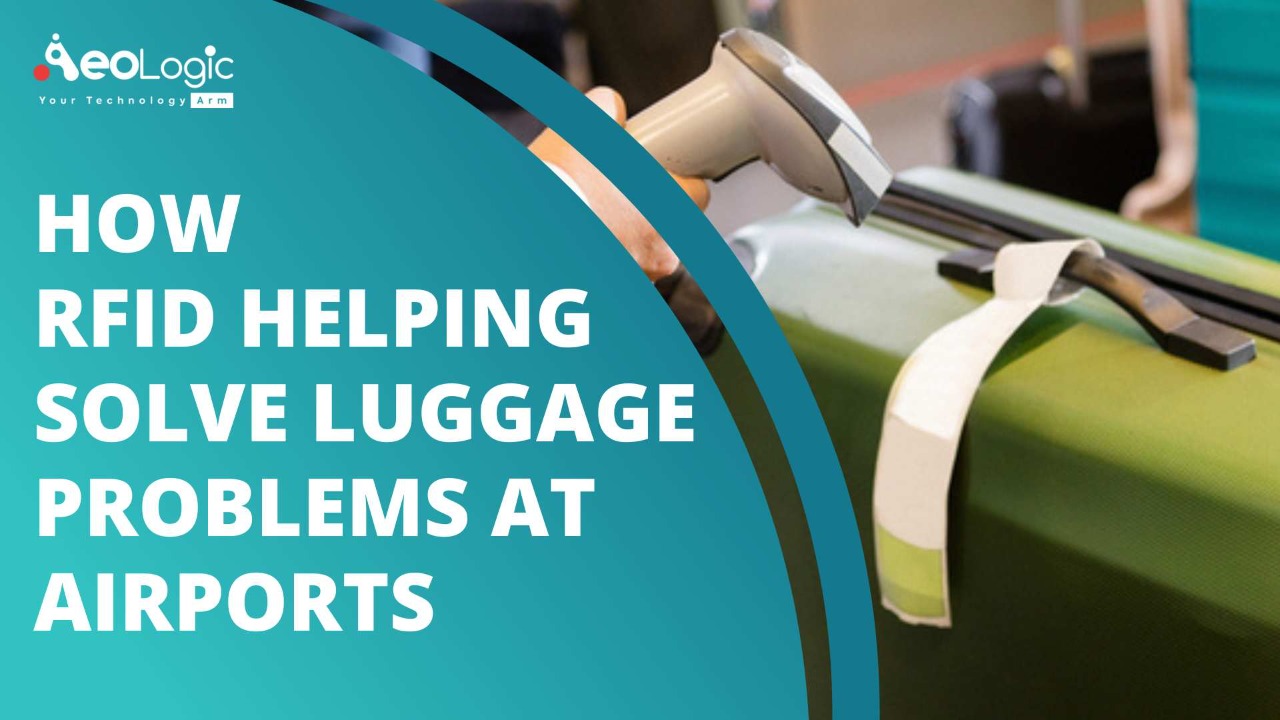Travelers have a number of frustrations at the airport. Misplaced luggage is the highest among those. The annoyance for passengers is understandable. Since people are going on a business trip or vacation don’t want to be without their luggage. This might need them to go pick up changes of clothing, toiletries, and so on. This drives dissatisfaction among passengers. Nonetheless, airports also share in the frustration. Firstly, the airlines have to trace the luggage. And then they have to transfer it to either the hotel or the traveler’s home. This costs them hundreds of dollars in expenses and time. To tackle these situations, RFID solves luggage problems at airports.
To minimize that, the International Air Transport Association (IATA) has been concerned with how RFID solves luggage problems at airports. RFID has some major benefits over barcodes. Since RFID can be read at a distance by readers and does not need line-of-sight to be read.
Also read: RFID Solutions for Inventory Tracking in Your Warehouse
How RFID solves luggage problems
Conventionally, most airlines were using barcoding or optical character recognition for keeping records of individual bags throughout their journey. However, a code printed on your baggage tag requires it to be plainly visible so that fixed and handheld readers can scan them. As well as scanning them one at a time. This method is often inefficient and tends to have errors. Moreover, many airlines don’t have systems that offer real-time data.
Under the new standard, a RAIN RFID tag containing a tiny radio chip and a foil-like antenna. It is embedded into each baggage label. Handholding and fixing RFID readers and installing gateways at transition points in a bag’s journey. As well as checking, loading, unloading, transferring, and delivering. (Valium) As a tagged bag passes by, an RFID reader scans the tag. And starts sending its identity, location, security status, and other data to the airline’s system in real-time.
Simultaneously, hundreds of RFID tags can be read without a direct line of sight. Moreover, offering greater than 99% accuracy. With all airlines and airports using the same standard, their systems can easily interact with each other. Hence, making it easier for finding misplaced baggage and reducing flight delays. Hence, RFID solves luggage problems at airports.
With so much visibility in real-time into their baggage operations, airlines are making use of this data in improving the customer experience.
Leveraging RFID Tags for Luggage
As mentioned above, RFID solves luggage problems at airports. It is helping airlines and airports in reducing the number of misplaced bags. RFID is also allowing employees to pinpoint a single bag. Furthermore, airlines are offering ways for travelers for tracking their bags throughout the baggage process. Businesses are choosing RFID due to its reliability, maturity, widespread availability, and cost.
RFID read rates provide an accuracy rate of 99-100% which is significant for helping the industry reach its target of 100% bag tracking. Since RFID solves luggage problems at airports, luggage can be scanned in bulk, hands-free. That too, from a distance of up to 30 feet. And RFID is supporting real-time tracking.
RFID solutions are increasing speed and accuracy. Therefore, allowing for luggage to be processed more quickly with fewer errors.”
Also, RFID is enabling automatic, accurate (by nearly 100%) real-time tracking at a sufficient read range without requiring line of sight with all the consequent benefits. Another benefit is that a reading infrastructure doesn’t need any cleaning or expensive maintenance once installed.
If compared to barcodes, RFID is the technically superior solution for tracking masses of items of almost any kind. The major advantages of RFID for baggage tracking are comprising of superior read-range of up to 10m / 33 ft. Hence requiring no line-of-sight. And bulk-reading capability (faster scanning process) as well.
Also read: Streamline Airport Parking With A Web-Based Reservation System
Conclusion
Since RFID solves luggage problems at airports, several airlines and airports are able to depend on tracking your luggage in real-time as it zig-zags across conveyor belts, gets loaded onto the plane, and arrives at baggage claim once you reach your destination. As it all is happening, you can use a mobile app for tracking your bag through its journey.
This kind of system is becoming the industry standard internationally.
Also read: Top Reasons to Use RFID in Manufacturing Industry
If you are interested in incorporating RFID technologies, connect with our industry experts at Aeologic Technologies.
FAQs
How airlines are tracing baggage using RFID?
RFID uses radio-frequency electromagnetic fields to send data and automatically recognize and track baggage tags. RFID technology allows bags to be recognized and tracked without the requirement for human intervention.
How RFID is used in airports?
Radio Frequency Identification (RFID) for baggage tracking offers the data that permits airlines to efficiently track the bag through all airport processes.








